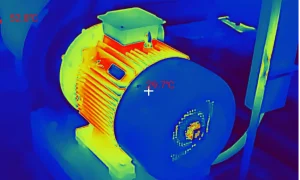Ultimate Guide to Render Cleaning: Boost Your Home’s Curb Appeal in 2024

Understanding Render Cleaning
What Is Render Cleaning?
Render cleaning is the process of removing dirt, stains, algae, mold, and other unwanted materials from the external rendered surfaces of buildings. Render, typically made from cement, lime, or acrylic, offers both aesthetic appeal and protection to structures but is prone to environmental wear and accumulation of grime over time. Using methods like render cleaning, homeowners can restore the beauty of their properties while maintaining the integrity of the surface.
The Importance of Render Maintenance
Regular maintenance of rendered surfaces is crucial not just for aesthetics but also for ensuring the longevity of the material. Dirt and organic growth can cause moisture retention, leading to potential structural damage over time. Untreated algae or mold can also compromise indoor air quality if spores become airborne, impacting the health of inhabitants. Therefore, proper render cleaning acts as a preventive measure to maintain property value and curb appeal.
Common Challenges in Render Cleaning
Cleaning rendered surfaces can be tricky due to various factors, including:
- Type of Render: Different render types (such as acrylic, silicone, or mineral renders) may require specific cleaning techniques or solutions to prevent damage.
- Stains and Growth: Persistent stains from algae, moss, or mildew can be difficult to remove entirely and often require specialized products.
- Surface Condition: Older render may have cracked or crumbled, making it more susceptible to damage during cleaning.
- Equipment Use: Inappropriate cleaning methods, such as high-pressure washing, can lead to surface damage instead of cleaning.
Techniques for Effective Render Cleaning
Soft Washing: A Gentle Approach
Soft washing is a preferred cleaning method for render surfaces because it employs low-pressure water paired with specialized detergents. This technique ensures that dirt and grime are effectively eliminated without stripping the render of its protective layers or causing physical damage. The process typically involves:
- Applying a biodegradable cleaning solution to the surface, which binds with contaminants.
- Allowing the solution to dwell and penetrate the stains and growths for a specified time.
- Gently rinsing with low-pressure water, ensuring all residues are washed away.
Furthermore, soft washing is environmentally friendly, as it minimizes water usage compared to high-pressure methods and reduces runoff of harmful chemicals.
High-Pressure Cleaning Risks
While high-pressure cleaning may appear efficient for quick cleanups, it poses significant risks, including:
- Surface Damage: Excessive pressure can erode the render, resulting in cracks and exposing underlying materials, which may incur additional repair costs.
- Water Ingress: High pressure can force water behind the render, leading to potential mold growth and structural integrity issues.
- Inconsistent Results: Striking varying pressure on different surface areas can cause an uneven appearance, often leading to aesthetics concerns.
For these reasons, high-pressure cleaning is generally discouraged for rendered surfaces, emphasizing the need for a more careful approach like soft washing.
Step-by-Step Render Cleaning Guide
To effectively clean your rendered surfaces, follow this detailed step-by-step guide:
- Assessment: Inspect the render for damage, algae growth, or staining to determine the best cleaning method.
- Preparation: Clear the surrounding area of furniture and develop a plan to protect plants and surfaces that might not be cleaned.
- Choose Cleaning Solution: Select an appropriate soft washing solution formulated for the specific type of render.
- Application: Using a low-pressure sprayer, apply the cleaning solution to the surface, ensuring comprehensive coverage.
- Allow Dwell Time: Let the solution sit for the recommended duration to effectively kill mold and algae.
- Rinse: Rinse the area thoroughly using low-pressure water to remove all contaminants and cleaning residues.
- Check for Stains: After drying, reassess the surface for remaining stains and consider reapplying the cleaning solution as necessary.
- Final Inspection: Conduct a final review of the surface and check functionality like drainage to ensure the cleaning won’t cause future issues.
Choosing the Right Cleaning Solutions
Eco-Friendly Chemicals for Render Cleaning
With rising awareness around environmental issues, using eco-friendly cleaning solutions has grown in popularity. Many commercially available cleaning products are formulated with biodegradable ingredients that effectively remove dirt and organic growth while minimizing environmental impact. When selecting eco-friendly options, check for:
- Non-toxic formulations: Ensure the product is safe for both the environment and inhabitants.
- Effectiveness: Look for solutions designed specifically for render surfaces to maximize cleaning efficacy.
- Concentration: These products should ideally be concentrated to minimize packaging waste and provide cost-effective solutions.
Homemade Cleaning Solutions
For those who prefer DIY methods, several homemade cleaning solutions may prove effective:
- Vinegar and Water: Mix equal parts of white vinegar and water to create a natural cleaning solution perfect for minor stains.
- Baking Soda Paste: Combine baking soda with water to create a paste that can be applied to tough stains, then scrub gently before rinsing.
- Dish Soap and Water: Mild dish detergent mixed with water can be effective against light soiling.
Always spot-test any homemade solution on a small, inconspicuous area before broad application, ensuring it does not adversely affect the render.
Commercial Products: Benefits and Drawbacks
When considering commercial products for render cleaning, it’s essential to weigh the benefits against potential drawbacks:
- Benefits:
- Designed specifically for render surfaces, often ensuring optimal performance.
- Availability of various formulas tailored for different types of stains.
- Potentially quicker results, especially when dealing with heavy infestations of growth or stubborn stains.
- Drawbacks:
- Some products can contain harsh chemicals that may harm the environment or damage nearby vegetation.
- Cost can be higher than DIY alternatives, particularly for premium brands.
- Depending on the cleaning agents used, there may be strict application guidelines to follow.
In summary, it’s crucial to consider factors such as effectiveness, safety, and environmental impact when making your choice.
Cost Considerations for Render Cleaning
Average Costs and Quotes
The cost for render cleaning typically ranges from £5 to £8 per square meter, depending on various factors. This estimate may vary significantly based on:
- Property size: Larger properties will naturally incur higher cleaning costs.
- Surface type: Different render materials may require different cleaning methods and solutions, affecting pricing.
- Method of cleaning: Utilizing soft washing methods will generally be priced differently than high-pressure cleaning.
For an accurate quote tailored to your situation, it’s advisable to reach out to local render cleaning professionals for estimates based on property specifics.
Factors Influencing Render Cleaning Pricing
In addition to the basic pricing structure, various factors may influence the overall cost of render cleaning:
- Accessibility: Difficult-to-reach areas can lead to additional labor costs.
- Extent of Cleaning Required: Heavily soiled surfaces may require additional cleaning products or prolonged labor time, which can increase the cost.
- Type of Equipment Used: Employing specialized equipment may raise costs due to rental or operational expenses.
- Geographic Location: Pricing can vary significantly depending on the region and prevailing market rates.
Being aware of these factors will help you budget effectively and avoid unpleasant surprises post-service.
Budgeting for Regular Maintenance
As with most aspects of property care, routine maintenance can save money in the long run. Budgeting for regular render cleaning services can prevent minor issues from becoming major problems. Establishing a maintenance schedule based on your property’s exposure to elements and growth patterns can be helpful:
- Inspect your property biannually to assess the condition of the render.
- Consider a cleaning schedule every 1-2 years in areas prone to organic growth.
- Factor cleaning costs into your annual maintenance budget for smoother financial management.
By prioritizing maintenance, property owners can enjoy peace of mind and protect their investment effectively.
Post-Cleaning Care for Rendered Surfaces
Sealing and Protecting Your Rendered Walls
Following a thorough cleaning, it’s wise to consider applying a protective sealant to your rendered walls. Sealants can help prevent moisture penetration, reduce staining, and even deter mold growth. When selecting a sealant, ensure it is compatible with your specific type of render and provides the desired level of protection without altering the surface’s appearance.
Monitoring for Future Issues
Regular monitoring is essential post-cleaning. Check for signs of recurrence such as:
- New growth of mold or algae.
- Discoloration or staining from environmental exposure.
- Cracking or peeling paint indicating moisture issues.
Addressing these issues early can prevent further damage and unnecessary expenses down the line.
When to Call Professionals for Help
While some homeowners may attempt to clean their rendered surfaces, certain situations warrant professional assistance:
- Extensive damage that exceeds DIY capabilities.
- Presence of hazardous materials, particularly in older properties with possible lead paint.
- Concern about improper cleaning techniques causing further harm.
- Lack of time or resources to complete the task reliably.
Overall, professional render cleaning services can provide expertise, specialized equipment, and a level of care that ensures your property is being treated correctly and effectively.






